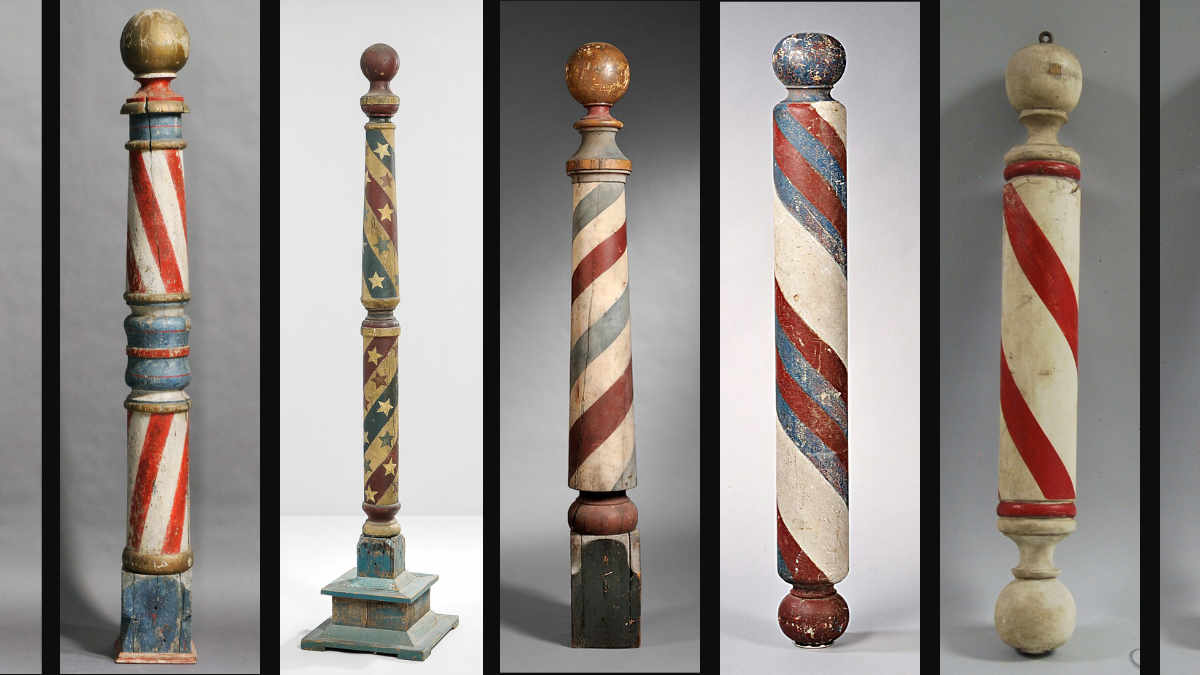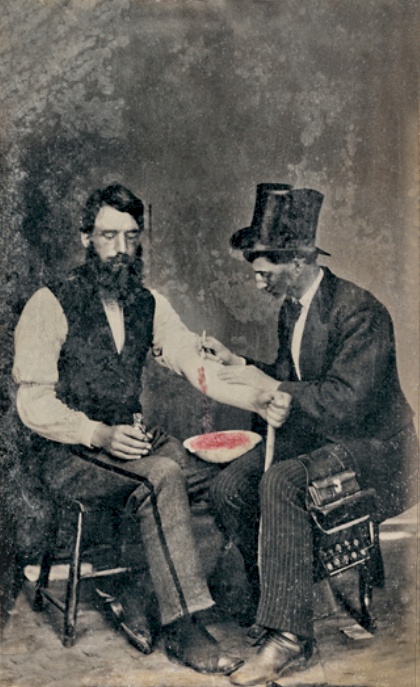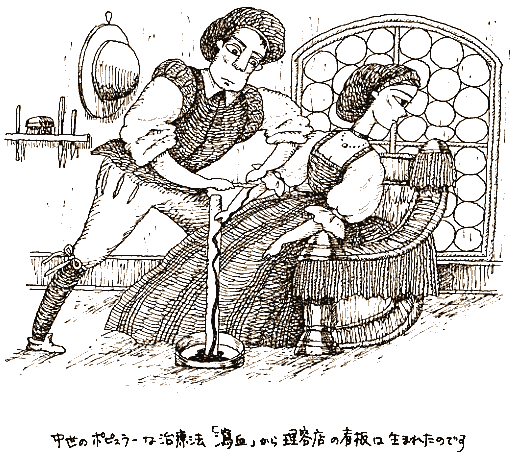
From amputations to enemas: The origin of the barber's pole.
Along with the Coca-Cola logo and McDonald's Golden Arches, the barber's pole is one of the most recognised symbols across the globe. Its origins are far more fascinating, however.
In the Middle Ages, barbers performed surgery in addition to haircuts. This is quite a departure from the modern barber's job description, and you may be wondering WTF? Let me explain...
Back in the day, there were two types of doctor. The first type was made up of people who were wealthy and studied medicine. They preferred an academic lifestyle and didn't like to get their hands dirty, rather than performing operations, these doctors generally just gave advice to their (wealthy) patients. The second type of doctor was the 'barber-surgeon'. Barber-surgeons would cut hair and perform cut-throat shaves, like modern barbers; and because of their skills with a blade, barber-surgeons also performed procedures such as amputations and bloodletting. Apparently, they also gave enemas. I'm not sure why you'd need skill with a blade to give an enema, but I'm not going to think about that in any more detail 😳.
Bloodletting - the modern day aspirin
Bloodletting was the most common surgical procedure that a barber would perform. It was the standard treatment for hundreds of common ailments including:
- Acne
- Cancer
- Comas
- Herpes
- Indigestion
- Insanity
- Leprosy
- Smallpox
- Strokes
Bloodletting was not only used to "treat" these conditions, it was also used to prevent them. Bloodlettings were thought to keep you in good health and it was encouraged to have them done regularly.
To receive a bloodletting, the patient would grasp a pole/staff tightly (this encouraged blood flow through the arm) and the barber would then apply leeches or slice a blood vessel open, catching the dripping blood in a brass basin.

Bloodletting in 1860, one of only three known photographs of the procedure. Courtesy of the Burns Archive.
It's generally thought that the red lines around the pole represent the blood flowing down it and the caps at either end represent the basin used to collect the blood (at the bottom) and the basin that held the leeches (at the top). Some poles also have blue lines around them. No-one's completely certain why, but it most likely dates back to a law when barbers and surgeons split, and then had to use either red or blue colours to distinguish themselves.

A crappy drawing of a bloodletting.
Some random facts
🔫 Barbers were often employed by the military and charged with caring for soldiers during and after battle.
👨⚕️Modern-day surgeons are referred to a Mr., rather than Dr., even though they go through the same training as other types of doctor. This tradition harks back to when surgeons were not academically trained.
⛪ Due to religious regulations, monks had to maintain their ring of hair (the tonsure). This created a market for savvy barbers who could then upsell other procedures such as tooth-pulling and the application of leeches for bloodletting.
💉 In the 1830s, the French imported forty million leeches a year for medical purposes.
💈 The world's tallest barber pole is 22m (72ft) and is in Forest Grove, Oregon.
